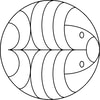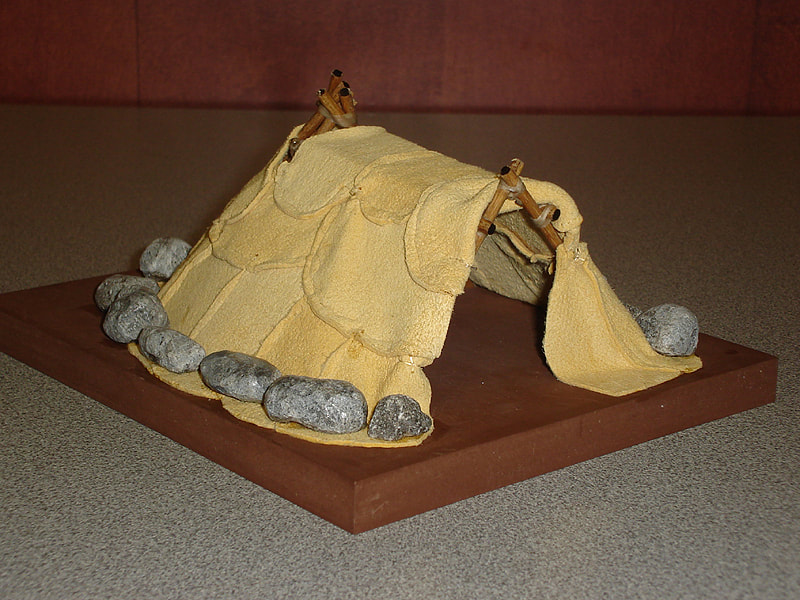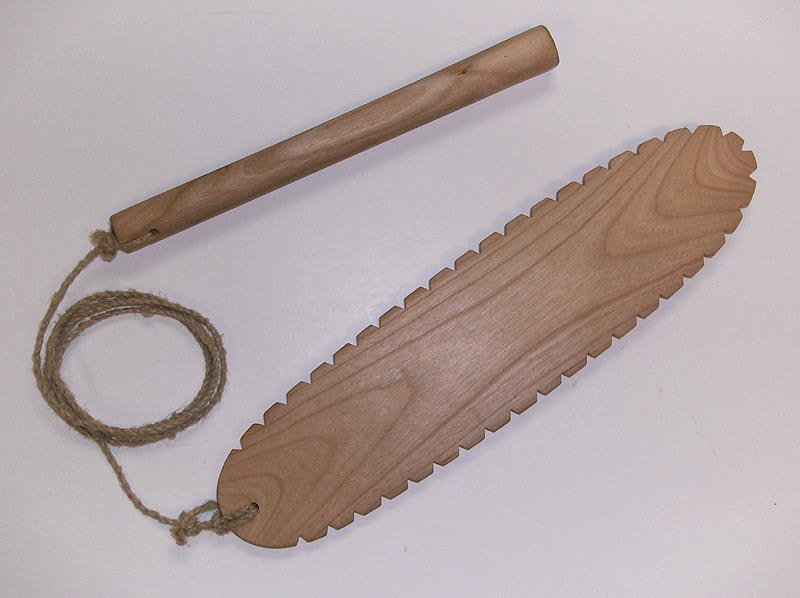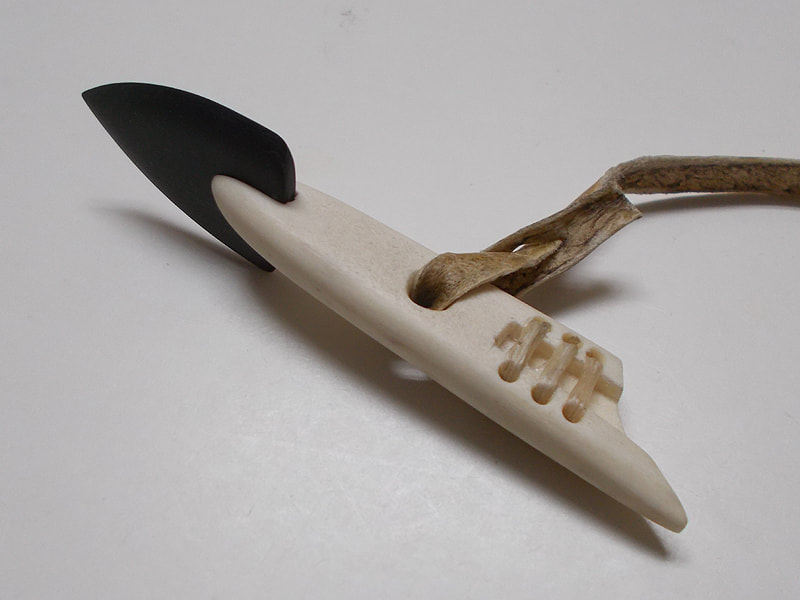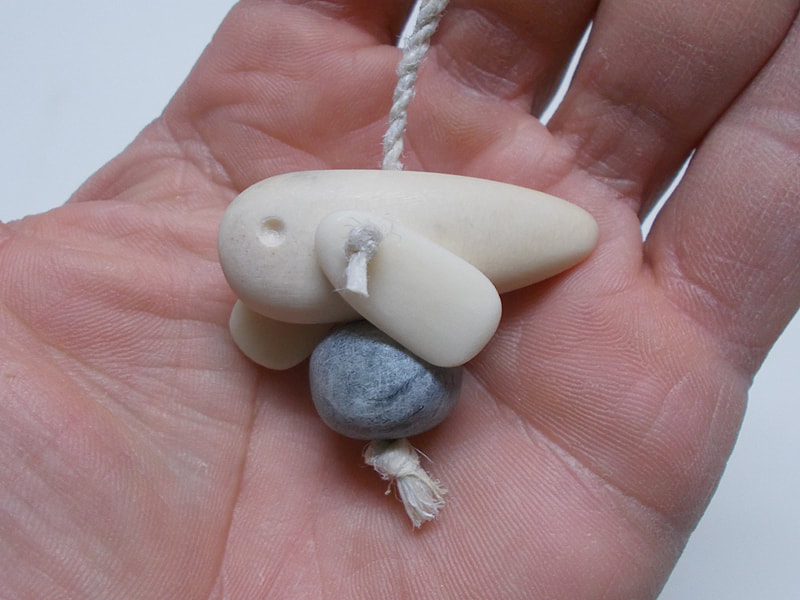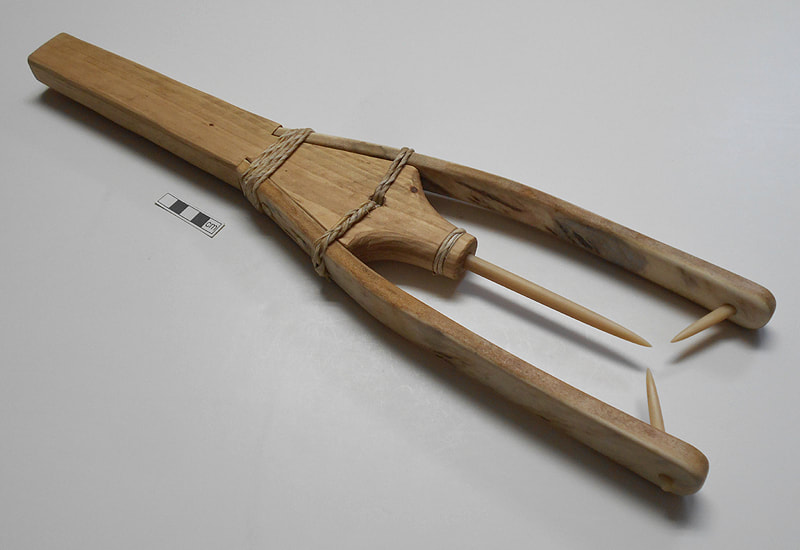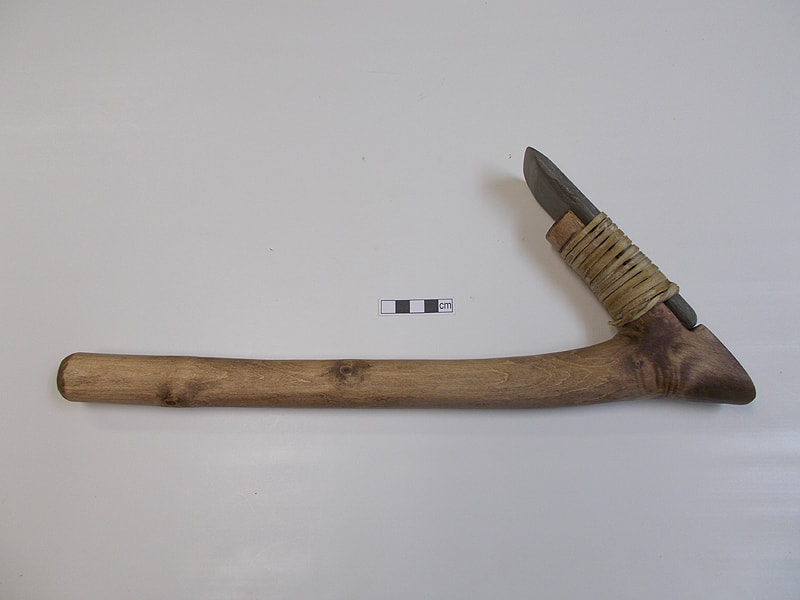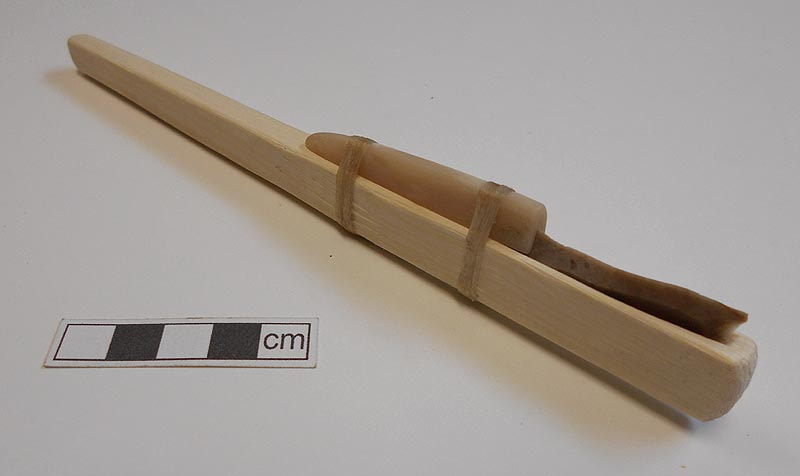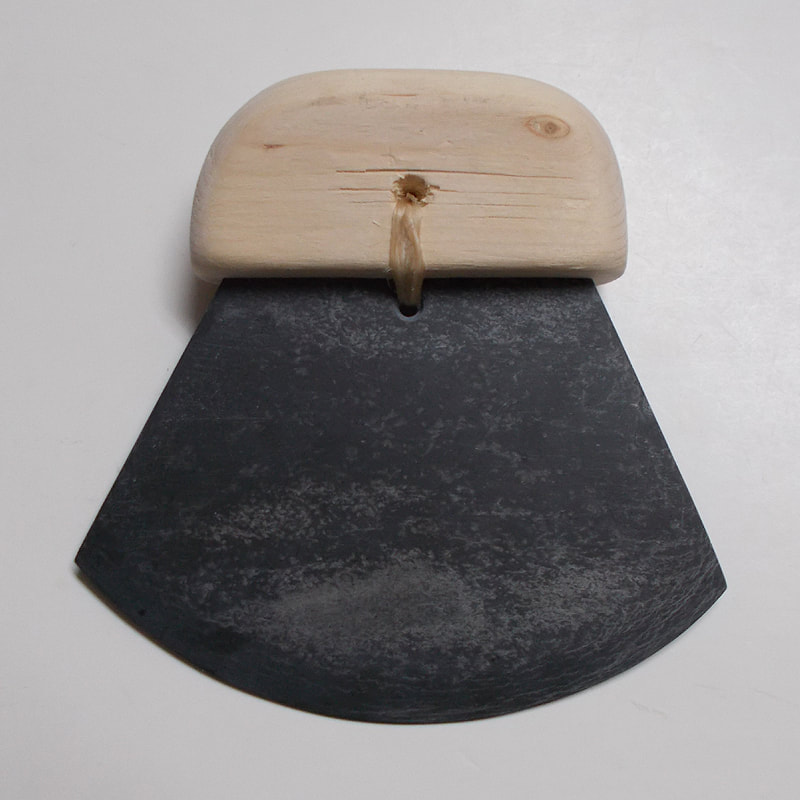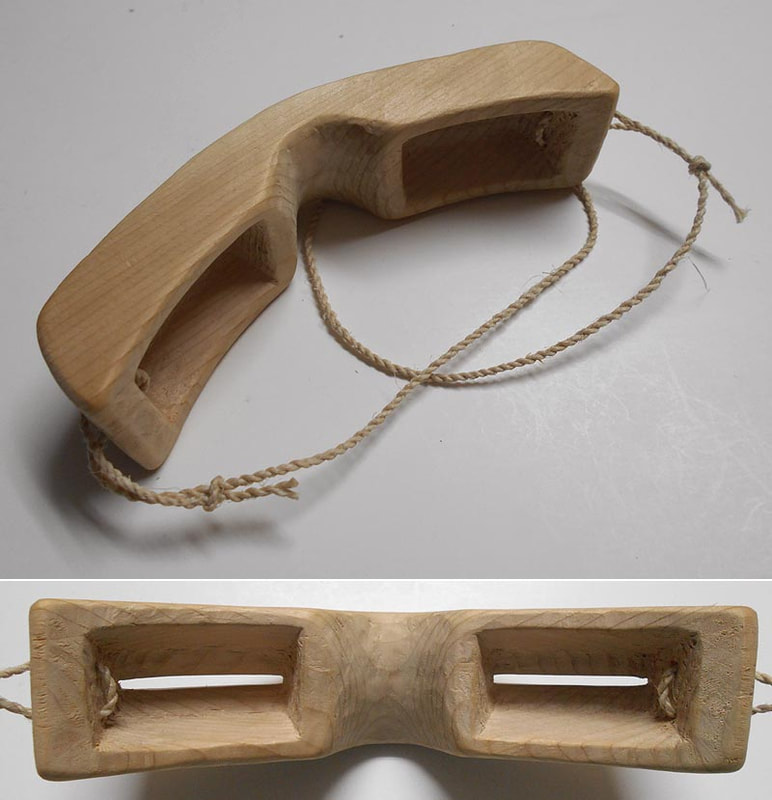Arctic |
|
The Arctic is inhabited by several Inuit groups from Quebec to Alaska and beyond. The Inuit migration in America is distinct from that of other aboriginal groups. The first groups called Paleoesquimo arrived in Quebec around 4,000 years ago from the western Arctic in search of game. Settling on the coasts, they hunted both land and marine mammals such as seal and caribou. Then around 1,000 years ago, these groups disappeared following a new migration from the western Arctic. These newcomers called Thule were large sea mammal hunters that possessed a technology adapted to marine resources. They are the ancestors of the present day Inuit who occupied the tundra as nomadic hunter-gatherers until the arrival of Europeans. In this cold environment where vegetation is minimal, animal resources were of vital importance.
|
|
Tupik model
Materials: wood, stone, leather Size: 6 x 6 inches In Quebec, the Inuit built two types of dwellings depending on the season. In the summer, they lived in a tupik made from wooden poles covered by caribou hides sewn together and pined to the ground with stones. In the winter, they built an igloo with snow blocks cut from the ground and raised in a spiral to form a semi-underground dome for a family of 3 to 5 people. |
|
Bullroarer
Materials: wood, plant fibre Size: 8 ½ inches The bullroarer is one of the most ancient sound instruments. It exists in many cultures and has many uses. Among the Inuit, they were made with antler, bone or wood. It was spun in the air with strong movements to produce a loud vibration. |
Harpoon point
Materials: antler, slate, rawhide, sinew Size: 4 ½ inches Harpoons points were usually made to be detachable and tied to a float the fisherman or the boat by means of a line. Once thrusted into the animal’s flesh by way of shaft, they remained hooked to allow the fisherman to retrieve the animal. |
|
Fish lure
Materials: bone, soap stone, sinew Size: 1 inch Suspended at the end of a line through a hole in the ice, this lure shaped like a fish with articulated fins and a stone sinker was used to attract bigger fish. This line without a hook was dangled to attract fish to the surface and spear them. |
Leister spear
Materials: wood, antler, bone, rawhide Size: 20 inches This harpoon was used for group fishing by trapping fish in a pool and spearing them or for individual use by using a lure to attract fish close enough to be speared. |
|
Adze
Materials: wood, slate, rawhide Size: 14 inches Most of the wood in the Arctic came from the logs and branches of conifers carried by ocean currents. Hard stones were not much more abundant so slate was often used to make tools suitable for the available softwoods. |
Microblade knife
Materials: wood, chert, bone, sinew Size: 7 inches This tool from the Dorset was used for a variety of tasks from butchering to cutting hide. This design allowed the blade to be easily replaced once worn out. |
|
Pin and ring game
Materials: antler, plant fibre Size (stick): 4 inches Pin and ring games were appreciated entertainment on stormy days. There were many kinds made with bone, antler and ivory. |
Ulu
Materials: wood, slate, sinew Size: 5 inches The ulu (in inuktitut language) is a semi-circular knife known for millenia in various parts of North America. Nowadays, it is mostly known among the Inuit and made of steel. |
|
Snow goggles
Materials: wood, plant fibre Size: 5 inches Snow goggles were an important item for hunters and travellers. They protected the eyes from the intense reflection of the sun on snow and ice which could otherwise lead to temporary blindness. |
Miniature kayak
Materials: wood, hide Size: 12 inches The kayak is a skin boat used mainly for hunting that allowed the pursuit of seals in the water or caribou on the shore. |
